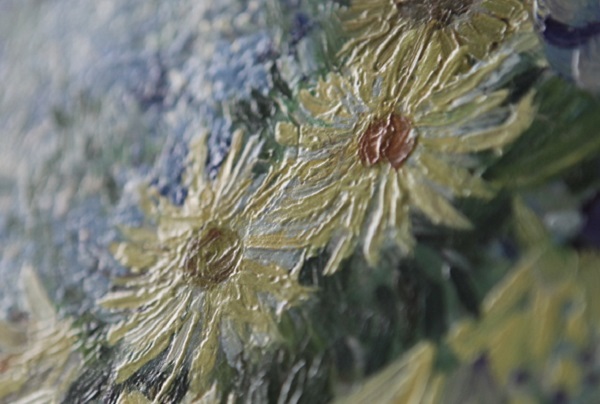Today’s lesson is that you can’t afford a painting by a Dutch Master but have an Océ printer laying around, you could make your own 3D printed painting reproduction.
In case it wasn’t obvious already, printing 3D painting reproductions at home won’t be possible in the near future. However, Tim Zaman, a scientist from Delft University of Technology in the Netherlands, details in his thesis how paintings could be scanned using a topographical imaging device for the near-planar surfaces, and then recreated using a specialized 3D printer.

The high-resolution 3D printer used for this incredible task, along with a unique 3D printing technology, were provided by Océ (a Canon company). In this context, it’s easy to assume that 3D printing will take off in ways we couldn’t even imagine a few years ago.
Scanning the original paintings is a time-consuming thing, but given the results, it is worth spending that time. The topographical imaging device is in fact represented by a projector and 2 cameras that capture all the brush strokes. For lovers of numbers and technical details, I must say that the two cameras were 40-megapixel Nikon products, and the fringe projector captured images with an in-plane resolution of 50 ?m, and a depth resolution of 9.2 ?m. It is also possible to X-Ray the painting, as shown in the first video, in order to discover the original intentions of the painter or how the first sketches looked like.
Below is the 4-minute BBC interview that details how the plastic replicas of the world’s greatest masterpieces came to be:
The topographical (3D) scanning of a Rembrandt is furthermore detailed in the following video:
Not at last, the printing process of these 3D fine art reproductions is showcased in the next clip:
As my mother is a painter, this form of art is among the ones I appreciate the most. I also find this technique of scanning and 3D printing famous paintings very fascinating. Maybe the original creations should be locked away and 3D printed versions should be exposed in museums, in order to prevent theft or even more terrifying things. On the other hand, I don’t know how an artist would feel if he or she found a reproduction of his paintings somewhere. They say that imitation is the sincerest form of flattery, but where exactly should we draw the line?
If you liked this post, please check these famous paintings recreated on toast and the 8-bit versions of famous art masterpieces.










